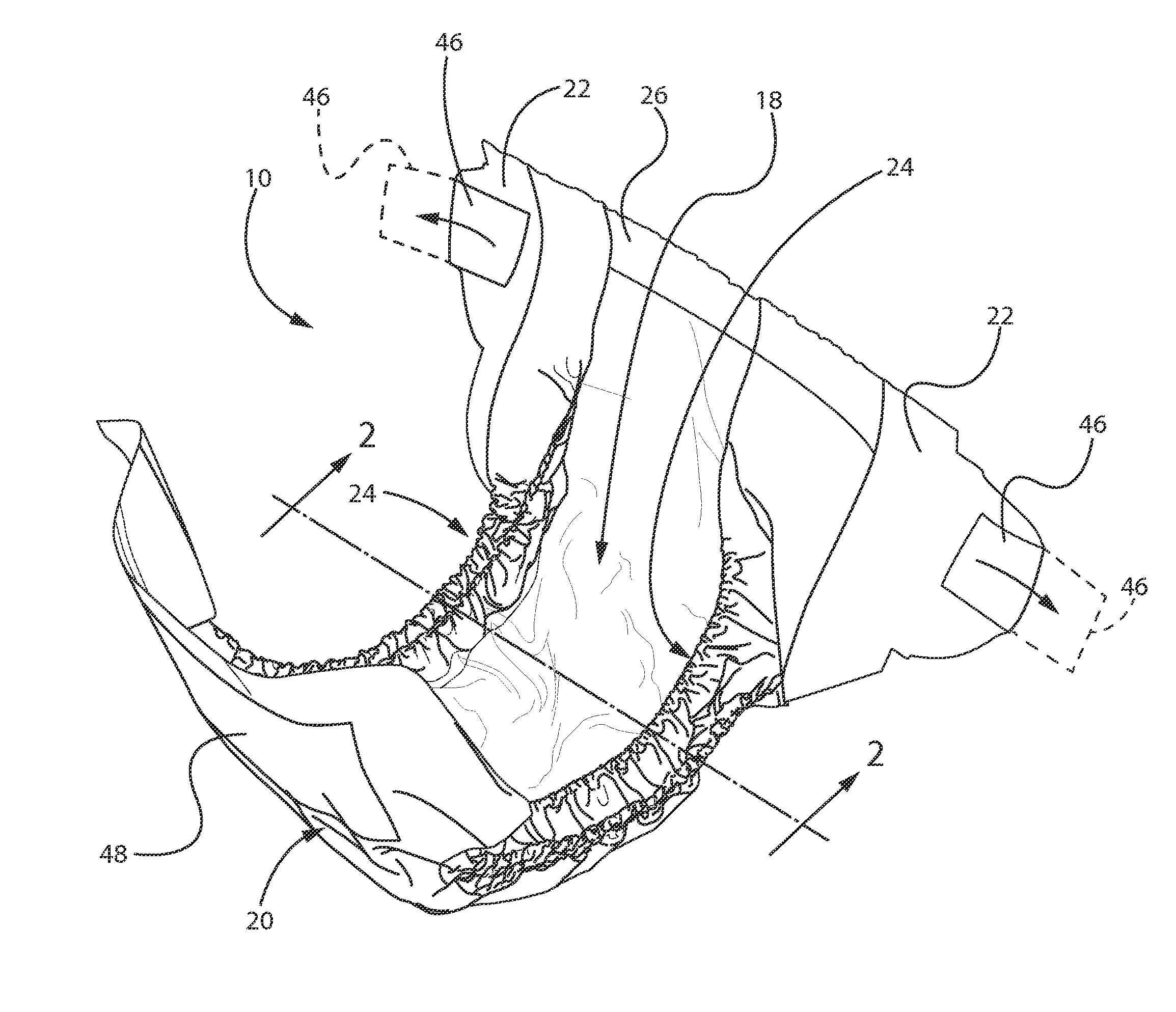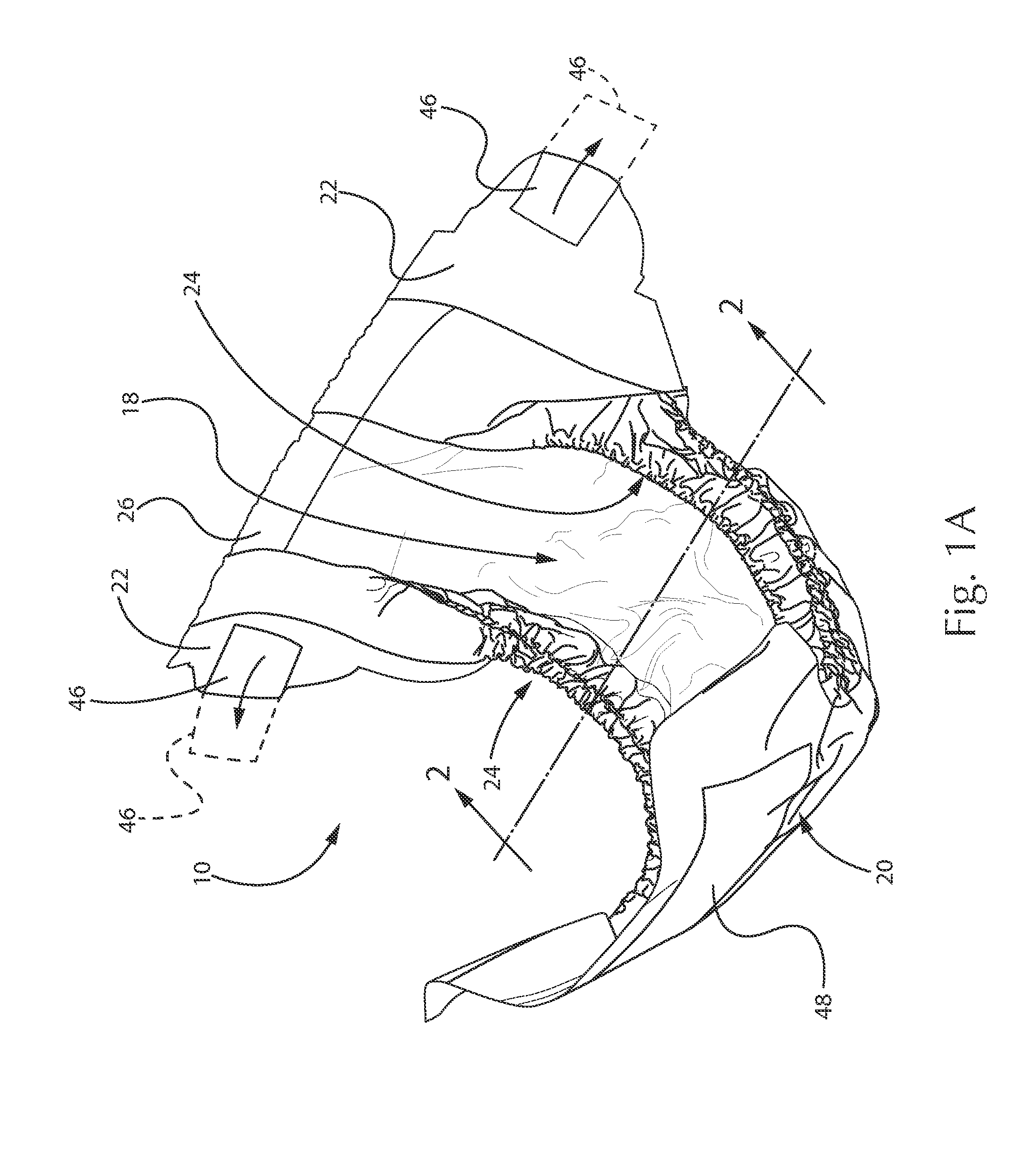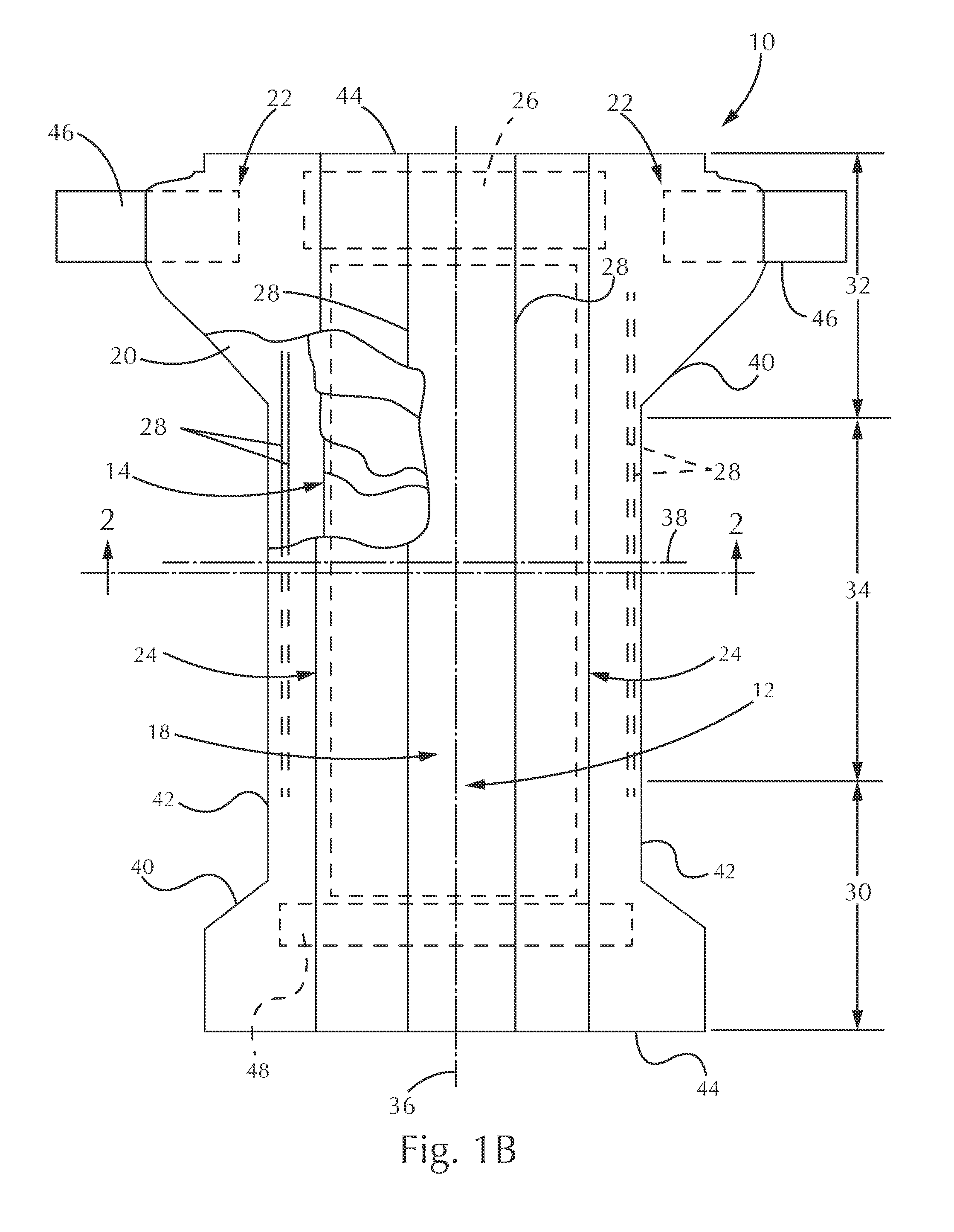Article with Nonwoven Web Component Formed with Loft-Enhancing Calender Bond Shapes and Patterns
- Summary
- Abstract
- Description
- Claims
- Application Information
AI Technical Summary
Benefits of technology
Problems solved by technology
Method used
Image
Examples
example 1
Comparative Standard Bulky
[0214]The 12 gsm spunmelt type nonwoven batt produced online in a continuous process from polypropylene (Mosten NB425 from Unipetrol), where monocomponent polypropylene filaments with a fibre diameter of 18-30 μm (1.5 to 2.5 den) are produced and subsequently collected on a moving belt. To increase strength a patterned calender is used consisting of a pair of heated rollers, where one roller has raised comparative pattern “Standard bulky” (FIG. 4A). The temperature of the calender rollers (smooth roller / patterned roller) is 165° C. / 168° C. and the pressure is 75 N / mm.
example 2
Comparative Standard Bulky
[0215]A 14 gsm spunmelt type nonwoven batt produced online in a continuous process from polypropylene (Mosten NB425 from Unipetrol), where monocomponent polypropylene filaments with a fibre diameter of 18-30 μm are produced and subsequently collected on a moving belt. To increase strength a patterned calender is used consisting of a pair of heated rollers, where one roller has raised comparative pattern “Standard bulky” (FIG. 4A). The temperature of the calender rollers (smooth roller / patterned roller) is 165° C. / 168° C. and the pressure is 75 N / mm.
example 3
Comparative Standard Bulky
[0216]A 15 gsm spunmelt type nonwoven batt produced online in a continuous process from polypropylene (Mosten NB425 from Unipetrol), where monocomponent polypropylene filaments with a fibre diameter of 18-30 μm are produced and subsequently collected on a moving belt. To increase strength a patterned calender is used consisting of a pair of heated rollers, where one roller has raised comparative pattern “Standard bulky” (FIG. 4A). The temperature of the calender rollers (smooth roller / patterned roller) is 168° C. / 171° C. and the pressure is 75 N / mm.
PUM
| Property | Measurement | Unit |
|---|---|---|
| Angle | aaaaa | aaaaa |
| Angle | aaaaa | aaaaa |
| Angle | aaaaa | aaaaa |
Abstract
Description
Claims
Application Information
 Login to View More
Login to View More - Generate Ideas
- Intellectual Property
- Life Sciences
- Materials
- Tech Scout
- Unparalleled Data Quality
- Higher Quality Content
- 60% Fewer Hallucinations
Browse by: Latest US Patents, China's latest patents, Technical Efficacy Thesaurus, Application Domain, Technology Topic, Popular Technical Reports.
© 2025 PatSnap. All rights reserved.Legal|Privacy policy|Modern Slavery Act Transparency Statement|Sitemap|About US| Contact US: help@patsnap.com



